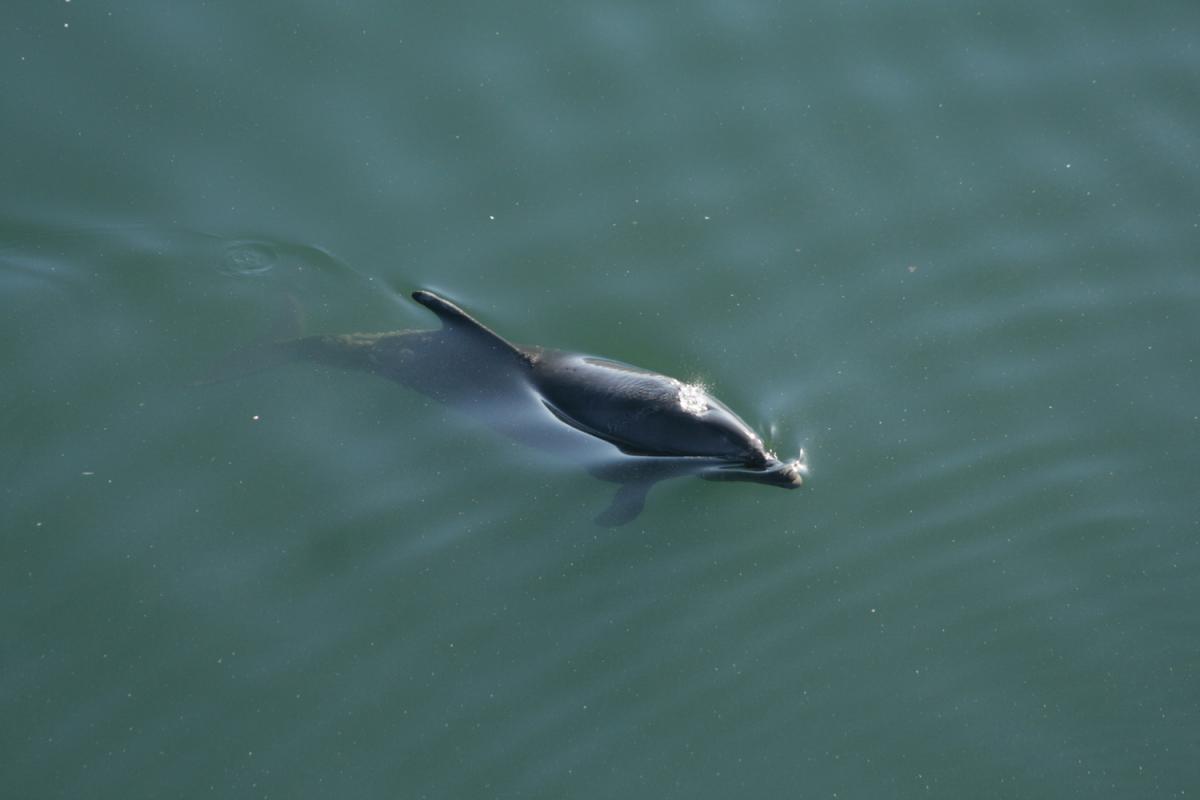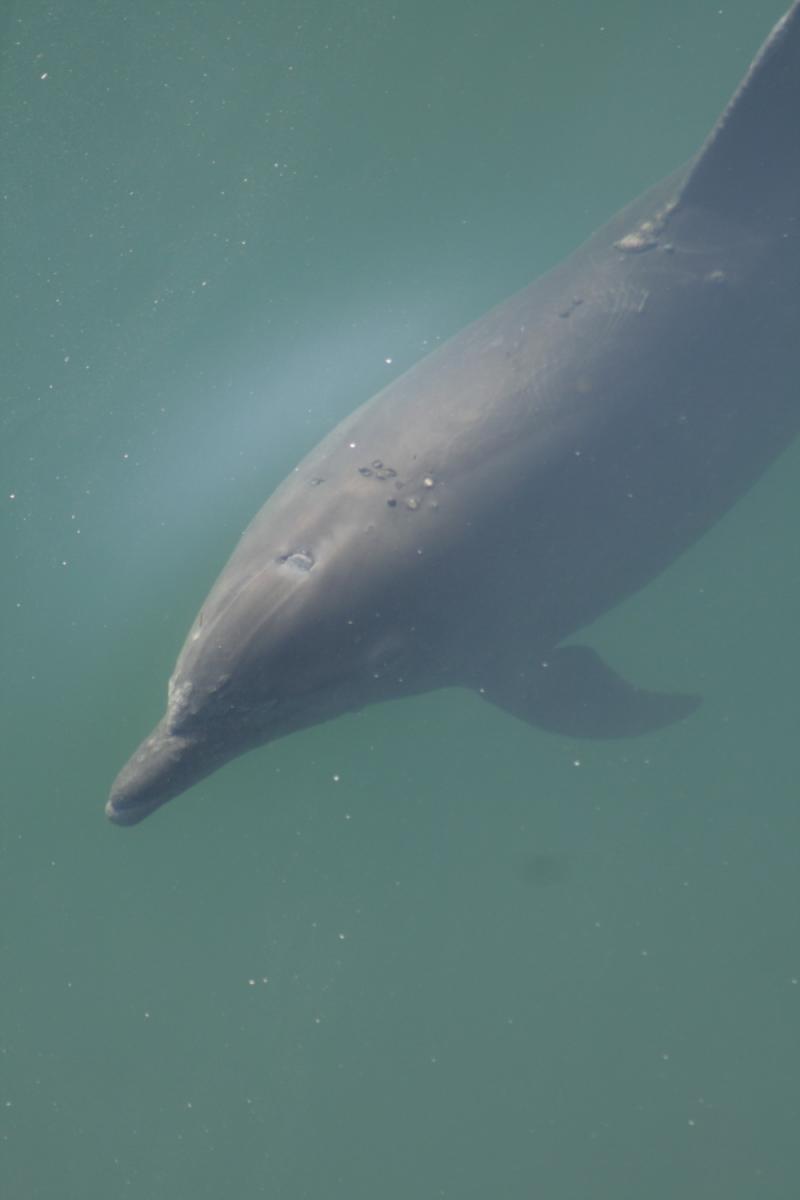Sightings and recent stranding of an unusual dolphin species in Southern Puget Sound, December 2010 to February 2011
A bottlenose dolphin, a very rare species to this region (only fourth occurrence documented, see below), was sighted multiple times in southern Puget Sound in December and January before stranding and dying on the Nisqually Delta sometime on or before 31 January 2011. This species occurs widely in tropical and temperate waters around the world but in coastal waters of the eastern North Pacific does not generally occur north of central California. The last confirmed live sighting of this same individual was on 18 January very close to where it was found stranded. The initial report of the stranding was on 31 January but the animal was in a hard to recover location on the delta within view of the new boardwalk that opened to the public on 1 February. The animal was moved by Nisqually Refuge personnel on 2 February to a spot where it could be picked up by boat later that day. An examination was conducted on 3 February by biologists with the Washington Department of Fish and Wildlife and Cascadia Research. This revealed the animal to be an about 6 1/2 foot immature male (196 cm). The animal was thin and had very little food remains in its stomach or intestines but did not appear to have starved to death. There were also indications of trauma around the head that may have been the result of it stranding alive and thrashing around prior to death. Internal organs were sampled for later examination and may reveal additional details about the dolphins condition and cause of death.
Earlier sightings up to 18 January 2011
While the most recent confirmed sighting of this dolphin was on 18 January in McAlister Creek at the Nisqually Delta, there had also been sighting reports from the public just before that on 15 and 17 January in Budd Inlet. In response to media reports, we did receive a number of calls from people reporting sightings of what they thought were bottlenose dolphins in Puget Sound in the past. While most of these appeared to be other species including Dall’s porpoise and harbor porpoise which are much more common in Puget Sound, a couple of these reports could have been bottlenose dolphins. There had been repeated sightings of a small bottlenose dolphin that appeared to be the same individual in southern Puget Sound going back to mid December 2010. Most recent sightings have been in Budd Inlet where the animal was sighted multiple times from 2-9 January 2011 including being filmed by King 5 News. Sightings occurred in the Redondo Beach area before that in late December and in and around the Port of Tacoma in mid December. The earliest confirmed sighting was 15 December 2010 (although there were reports that could have been this individual as early as 11 December). While in the Port of Tacoma area between 15 and 17 December, it was confirmed to be a bottlenose dolphin from photos taken by biologists from Washington Department of Fish and Wildlife and Cascadia Research. Bottlenose dolphins are typically seen only as far north as central California and sightings or strandings are rare in Washington waters.
When the animal was sighted alive it appeared to be in reasonable fitness but did have a skin condition of unknown origin. Similar skin conditions have been seen in bottlenose dolphins in California. Cascadia Research, Washington Department of Fish and Wildlife, National Marine Fisheries Service, and other members of the Northwest Marine Mammal Stranding Network (such as Highline Community College MaST Center at Redondo) participated in the monitoring of the animal’s movements and condition; please report any sightings to Cascadia Research at 360-943-7325, or toll-free at 800-747-7329.”
Previous sightings and strandings of bottlenose dolphins in Puget Sound
We are aware of only two other occurrences of bottlenose dolphins in Puget Sound (and one more in the Strait of Juan de Fuca). The first was an adult male that stranded in Samish Bay in March 1988 and was examined by biologists with both the Whale Museum and the National Marine Mammal Laboratory (reports of this are published by Osborne and Ransom in Cetus in 1988 and Ferrero and Tsunoda in Marine Mammal Science in 1989).There were no live sightings of this animal and there was some uncertainty as to the origin of the animal although it was thought to come from the coastal population in the eastern North Pacific. In 2004, a bottlenose dolphin was documented, again only as a stranding in the Strait of Juan de Fuca near Sequim. It was a subadult female found freshly dead on 14 June 2004 and collected on 15 June.
The other documented occurrence of a bottlenose dolphin in Puget Sound was just from earlier in 2010 and included sightings in a number of areas of southern Puget Sound between 4 and 13 June 2010 and then the stranding of what we suspect was the same animal near Steilacoom on 18 July 2010. The stranded animal while already fairly decomposed (had possibly been dead several weeks) was confirmed to be a female bottlenose dolphin both from appearance and genetics.
The sightings and stranding of two different bottlenose dolphins as well as two tropical Bryde’s whales (see summary of recent strandings from January 2010 and December 2010) in Puget Sound all in the last year form a surprising pattern because they are all very unusual this far north. While the cause for this is unknown they appear likely related.
Stories in the media on this topic:
King 5 News 7 January 2010
Seattle Times 7 January 2010
Also see the Highline Community College’s Marine Science and Technology Facebook page on sightings and video of the dolphin.
Photos below taken by Josh Oliver courtesy of WDFW and Cascadia Research.

